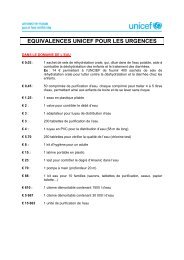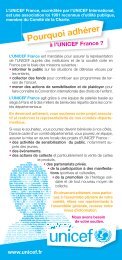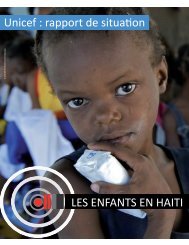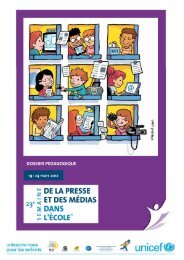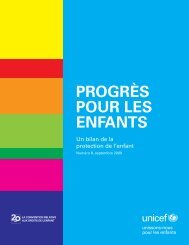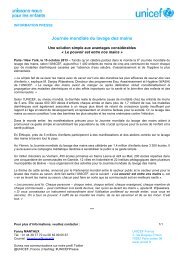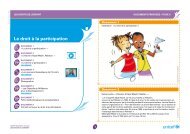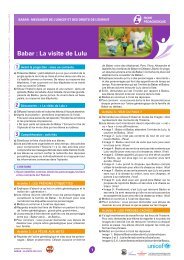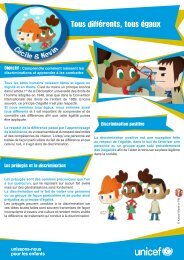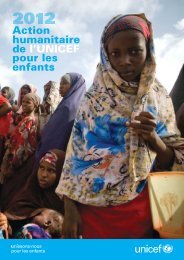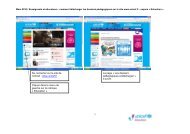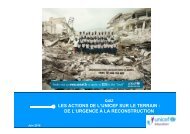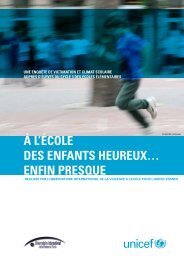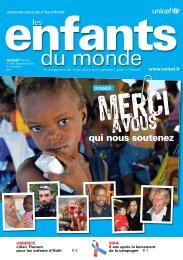SUPPLY ANNUAL REPORT 2008 Local Delivery Global ... - Unicef
SUPPLY ANNUAL REPORT 2008 Local Delivery Global ... - Unicef
SUPPLY ANNUAL REPORT 2008 Local Delivery Global ... - Unicef
You also want an ePaper? Increase the reach of your titles
YUMPU automatically turns print PDFs into web optimized ePapers that Google loves.
A champion of new products and<br />
innovations<br />
In many developing countries, it is children (usually<br />
girls) and women who are responsible for fetching<br />
water. For the average family of six people this can<br />
represent between 50 and 90 litres per day. Add<br />
to this the fact that in Africa the average distance<br />
walked to get water is 5.5 kilometres. It becomes<br />
simple to see how a household’s need for water can<br />
prevent girls from attending school, not to mention<br />
increase the risk of their coming into contact with<br />
contaminated water and disease.<br />
Finding innovative solutions to the chore of fetching<br />
water is just one area where UNICEF is focusing<br />
its efforts. In <strong>2008</strong>, Supply launched an Innovation<br />
Strategy, including a business model and innovation<br />
generator, creating an efficient process for identifying,<br />
defining and addressing needs and problems - with the<br />
goal of developing new products, services and processes.<br />
The innovation generator model streamlines<br />
the methodology to ensure that innovation is based<br />
on actual user needs.<br />
So far, eight pilot projects have been identified<br />
with help from field, Programme and Supply staff.<br />
These include a Mother-Baby Pack for prevention<br />
of mother to child transmission of HIV/AIDS, and<br />
several water and sanitation related products, such<br />
as a light, compact, and durable water container that<br />
is still rigid enough to be carried on the head. Also<br />
being explored is how SMS technology solutions<br />
can strengthen the delivery of goods, initially in the<br />
distribution of Ready-to-Use Therapeutic Food and<br />
bednets.<br />
We recognise that finding innovative, end-user-driven<br />
solutions is something we cannot do alone. Our<br />
future lies in a fruitful dialogue between end-users,<br />
academia, design experts, businesses and other partners.<br />
Each has something to contribute; creativity<br />
breeds creativity, helps challenge the status quo and<br />
challenges us all to think outside the box.<br />
In <strong>2008</strong>, we established strong networks with<br />
academia – specifically innovation specialists and design<br />
schools. We have created links to the Index Award, and<br />
have provided design briefs as part of the Aspen Design<br />
Challenge - with the purpose of engaging the millennial<br />
generation in solving an emerging set of global<br />
issues. These relationships and others will continue<br />
to be built in the coming years. In the short-term, we<br />
expect to identify several tangible<br />
solutions for the initial set<br />
of challenges, and identify new<br />
problems as UNICEF continues<br />
to influence the global innovation<br />
agenda for children.<br />
<strong>SUPPLY</strong> <strong>ANNUAL</strong> <strong>REPORT</strong> <strong>2008</strong> 9



